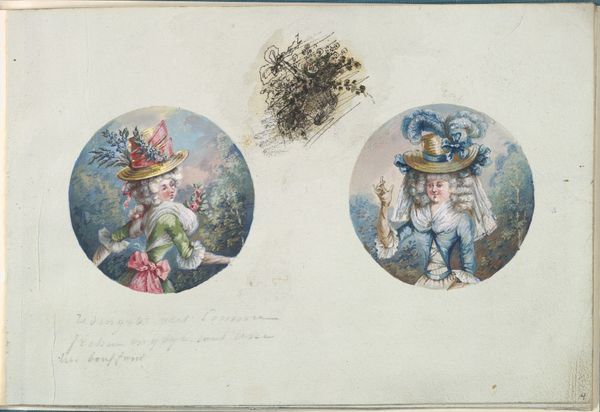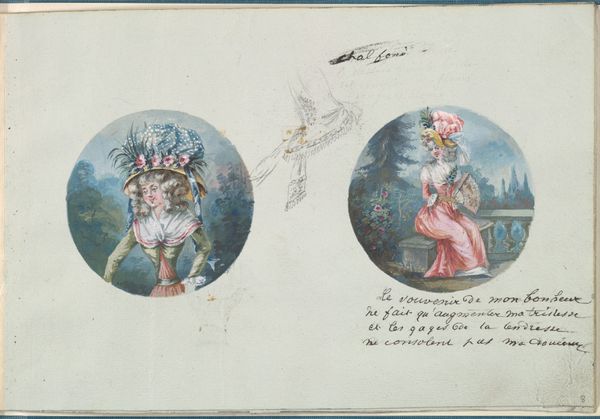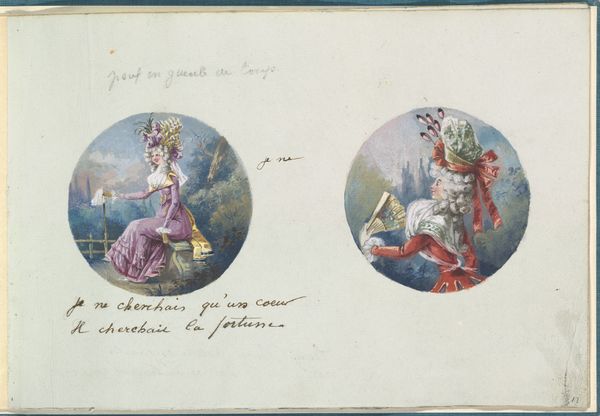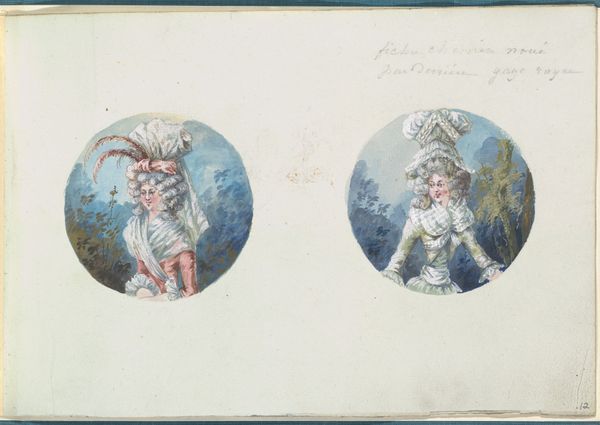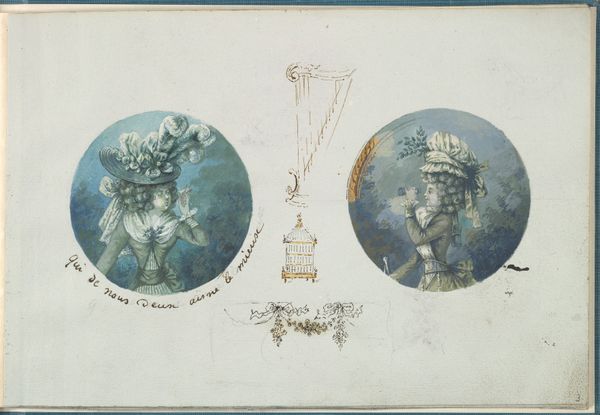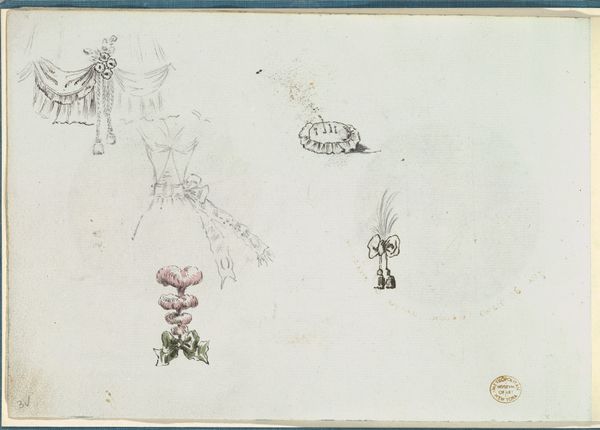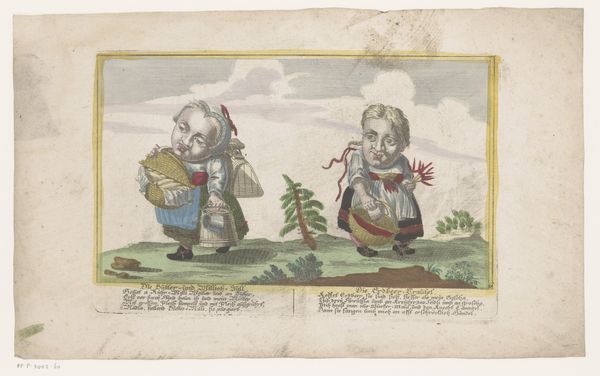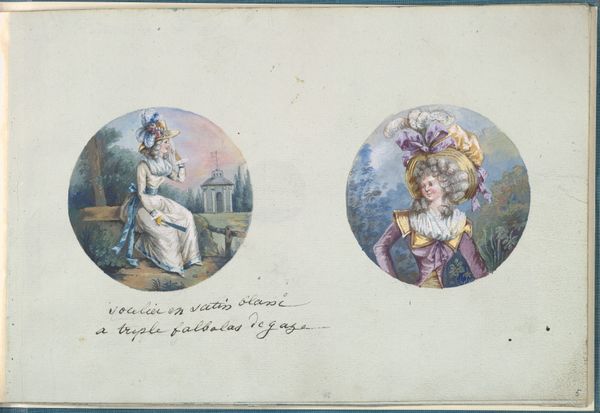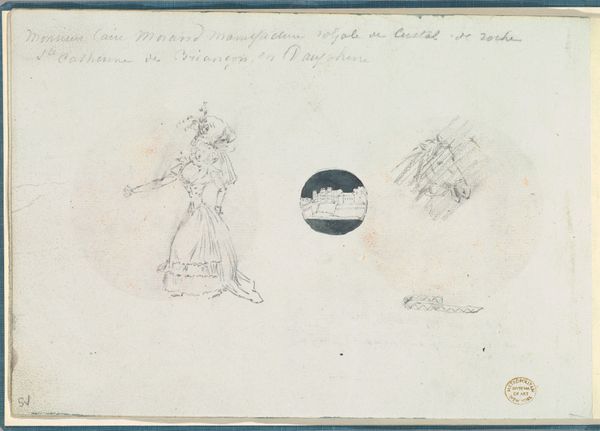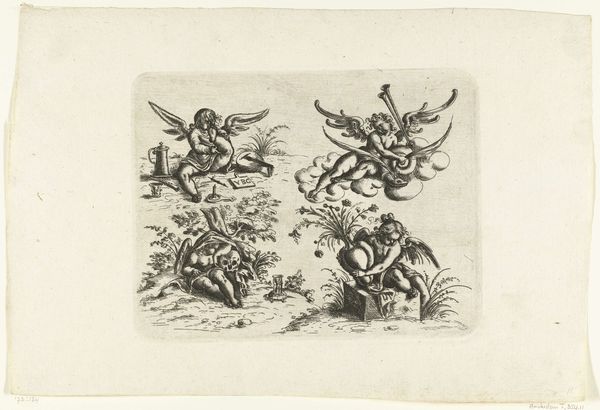
Dimensions: Sheet: 6 11/16 x 9 15/16 in. (17 x 25.3 cm)
Copyright: Public Domain
Curator: What a delightfully frivolous scene! At first glance, there’s such lightness here; a real sense of powdered wigs and whispered secrets. Editor: Indeed. The artwork presented is titled “Two Costume Designs or Portrait Types” from somewhere around 1785 to 1790. We don’t currently know the identity of the creator, but this drawing combines watercolor and colored pencil to give us insight into the world of late 18th-century fashion and representation. Curator: Representation, certainly. It’s hard not to read these portraits as documents of the anxieties of the pre-revolutionary period, when the very artifice of aristocratic life came under such intense scrutiny. Notice how the subjects are framed almost as specimens. They really emphasize that visual display was a currency for the elite of the era. Editor: Right, look at how the rendering focuses so much on material description in the French annotations surrounding each portrait: detailing a hat à la Théoivre and even angora goat fur trim. Consider the labor and the systems of extraction, breeding and global trade required to get that fur! Curator: It really illustrates how those anxieties play out on the body. There’s something quite tragic, though, in seeing these individuals so rigidly defined by their outward appearance. It’s as if the surface has become everything, a sort of gilded cage. The viewer must ask questions about identity and privilege within these social constructs. Editor: These miniatures speak volumes about labor conditions and raw material access; what was the manufacturing landscape that made such finery even remotely available to any person depicted here? What about the material consequences—of extraction and manufacture and eventual disposal, for that matter? Curator: Thinking about our contemporary obsessions with beauty and status, one is struck by the enduring relevance of such critical inquiry into the societal production of self. Editor: Right! As cultural objects they highlight and expose embedded manufacturing processes, bringing art production down to earth. There’s an intrinsic link to production—materiality that shapes social relations—of a person wearing it and everyone else involved in creating it. Curator: Thank you for shedding light on aspects of production that would surely broaden understanding for all. Editor: You too, thank you. It has been fascinating linking art, the body, class and economics.
Comments
No comments
Be the first to comment and join the conversation on the ultimate creative platform.

